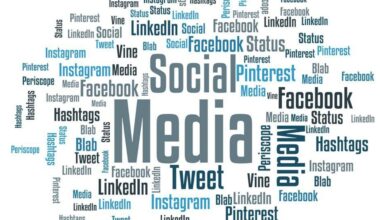Essential Metrics to Track in Visual Content Scheduling
Tracking essential metrics in visual content scheduling is crucial for ensuring your content reaches its target audience effectively. First, consider engagement metrics, which include likes, shares, comments, and overall interaction rates. These metrics provide insight into how well your visuals resonate with your audience. Moreover, analyzing click-through rates (CTR) can help gauge the effectiveness of your visual content in driving traffic to your website or blog. The frequency of post engagement also matters; consistent engagement indicates that your audience appreciates your material. Additionally, consider tracking the reach of your posts to understand how many users actually see your visuals. This metric is vital for optimizing your posting times and frequency. To further refine your strategy, look into conversion rates, which transform interaction into measurable outcomes, such as sales or sign-ups. Lastly, identifying which types of visuals get the highest engagement can help tailor your future content strategy. By regularly monitoring these metrics, users can fine-tune their visual content strategies for maximum impact and reach.
Another critical metric to consider when scheduling visual content is the completion rate for videos. This measures the percentage of viewers who watch your video content from start to finish. High completion rates typically indicate that your content is engaging and relevant, encouraging viewers to consume the entirety of your narrative. This metric can also highlight areas for improvement; if viewers drop off at a certain point, analyzing that segment can provide insights. Simultaneously, use audience growth rate as a metric; it tracks how quickly you gain followers or subscribers after posting your visuals. This measure can help determine the effectiveness of your content strategy and indicate whether your visuals are attracting new audiences. You might also analyze demographic data of your audience to ensure your visuals appeal to the targeted group based on age, location, and interests. A strong understanding of your audience demographics can lead to better-informed decisions for future content. Regularly reviewing these metrics will help sharpen your content delivery and maximize your visual brand’s impact.
Understanding Platform-Specific Metrics
Each social media platform boasts unique metrics, so it is essential to understand these when scheduling visual content. For instance, Instagram may emphasize impressions and reach more significantly than LinkedIn, which might focus on engagement rates and shares. Monitoring these platform-specific metrics allows you to tailor your visual content strategy accordingly. Take time to familiarize yourself with these metrics to make informed decisions about your posting schedule and content type. For instance, if Instagram posts receive a high number of impressions but low engagement, it may be wise to refine your imagery or call-to-action strategies. In contrast, content on Facebook generally requires a more community-driven approach, focusing on meaningful interactions that encourage discussions. Tools such as native analytics or third-party apps can help streamline this analysis by consolidating data from multiple platforms into one report. As you adjust your visuals based on these metrics, continuously experiment with various content styles and formats to keep things fresh and aligned with audience preferences.
Monitoring the timing of your posts can significantly impact how your visuals are received by the audience. Scheduling posts during peak engagement times ensures that your content is seen by the maximum number of users. Therefore, using insights from previous posts can help determine when your audience is most active. Different industries can see varied peak times for engagement; for example, B2B businesses might find weekdays during office hours to be productive, while B2C brands may receive better engagement during evenings and weekends. Experimenting with different posting schedules and studying the follow-up may reveal trends that improve overall engagement rates. Utilizing scheduling tools can help automate this process, ensuring consistency and freeing up your time for content creation. Additionally, researching industry benchmarks can offer guidance on effective scheduling practices. Continuously assessing how timing impacts your metrics enables you to refine your strategy, allowing you to capitalize on the moments when your audience is most receptive.
Utilizing A/B Testing for Optimization
A/B testing can be a game changer in visual content scheduling, offering insights into what resonates best with your audience. By testing two variations of your visual content, you can analyze which design, caption, or post timing yields better results. This method provides data-driven evidence on audience preferences, leading to more effective content strategies. For example, altering the colors, fonts, or styles in your visuals—and measuring engagement differences—could reveal which aesthetic appeals more. Additionally, varying the wording in your captions can show which prompts generate more engagement. Track these results diligently to accumulate valuable data over time. Furthermore, consider testing not just the visuals, but also the times at which you publish your content. A/B testing requires patience and a willingness to learn; not all experiments will yield conclusive results. However, the iterative process of testing and adjusting will sharpen your visual strategy, infusing your content schedule with continual growth based on real audience preferences. This thoughtful approach to optimization can drastically enhance your visual content’s performance in a competitive space.
Understanding the importance of branding consistency is vital when analyzing your visual content metrics. Are your visuals aligned with your brand voice and style? Consistent branding helps audiences recognize your content instantly, thus fostering loyalty and trust. Metrics related to brand awareness, like post shares and new followers gained, should be monitored to assess the effectiveness of your branding efforts. Inconsistent visual styles can confuse audiences and diminish the impact of your message, so maintaining a uniform color palette, typography, and general aesthetics is essential. Ensure that your visuals reflect the core values of your brand while appealing to your target audience. Visuals should tell a consistent story, aligning with your brand imagery across platforms. Additionally, investing in high-quality images and graphics amplifies your branding efforts. Regular audits of your visual content and their respective performance will uncover areas where consistency may lapse. By enhancing brand consistency through metrics, you can significantly boost audience engagement and reinforce your overall brand image.
Final Thoughts on Metrics in Visual Content Scheduling
In conclusion, monitoring essential metrics is fundamental for successful visual content scheduling. Engagement rates, completion rates, and specific platform metrics offer a wealth of information that helps tailor your visual strategy. Utilizing A/B testing regularly helps optimize content styles and timing, ultimately enhancing effectiveness. You should always remain flexible and open to adjusting your content schedule based on the latest data trends. Additionally, maintaining branding consistency can significantly impact audience perception, ensuring your visuals resonate with their values. Leverage audience insights and demographics to further refine your content, maximizing relevance and impact. Ultimately, tracking these metrics is not a one-time effort; it’s a continuous process that evolves alongside your audience’s preferences. As you continue to engage with your audience and their evolving tastes, your visual content scheduling will see significant improvements. Remember, the goal is not merely to generate visuals but to create meaningful connections with your audience, fostering relationships that are impactful and lasting. Stay committed to monitoring and refining your strategies, and your visual content will thrive in today’s dynamic digital landscape.



